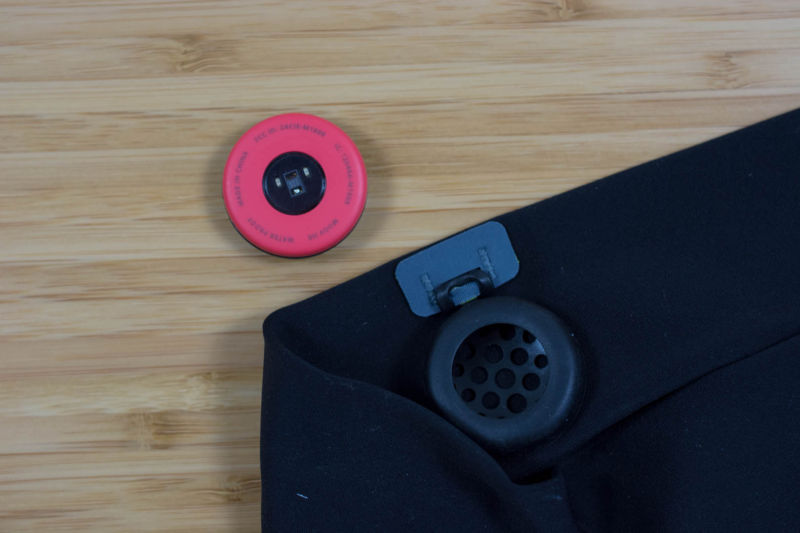
Enlarge / Module outside of its headband. (credit: Valentina Palladino)
If you want to get a fitness tracker, you have to decide is if you want one that’s compatible with a heart-rate monitor. Learning your heart-rate patterns, both during a workout and during daily activity, can show you a lot about your health. According to Harvard’s Health blog, your resting heart rate is a key factor to determining your overall current and future health, and monitoring heart-rate changes over time can give you more of the information you need to lead a healthy life.
Chest straps and optical heart-rate monitors are the two most common types of pulse trackers available for modern wearables, and they both use similar methods to measure your pulse. However, their key differences in methodology and design will dictate which device you choose when picking a workout companion.
Chest straps
Heart-rate monitoring chest straps are both loved and hated. Most of them are made of a long, belt-like elastic band that wraps snugly around your chest, a small electrode pad that sits against your skin, and a snap-on transmitter. These heart-rate monitors work differently than the ubiquitous wrist-bound monitors on new wearables because they use electrocardiography to record the electrical activity of your heart. This process requires electrodes, which live in the shiny, flat pad against the skin. That pad needs moisture water or sweat to pick up any electrical signal. When you’re working out and sweating, the electrodes pick up the electrical signals given off by your heartbeat, and they send that information to the transmitter.




